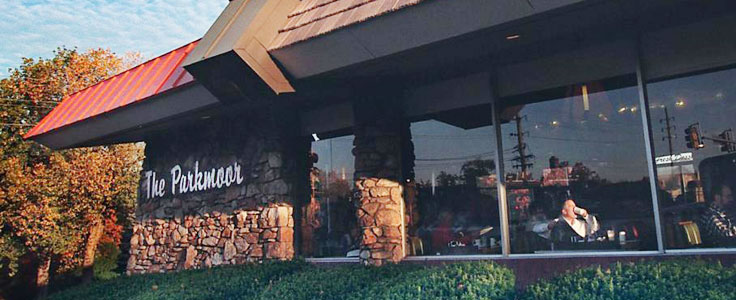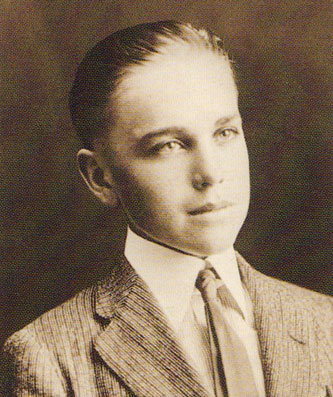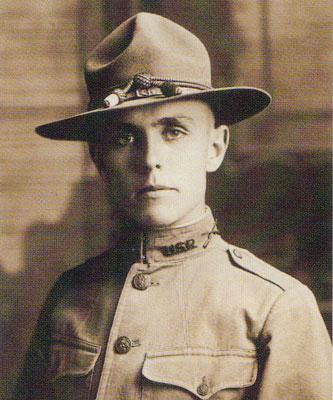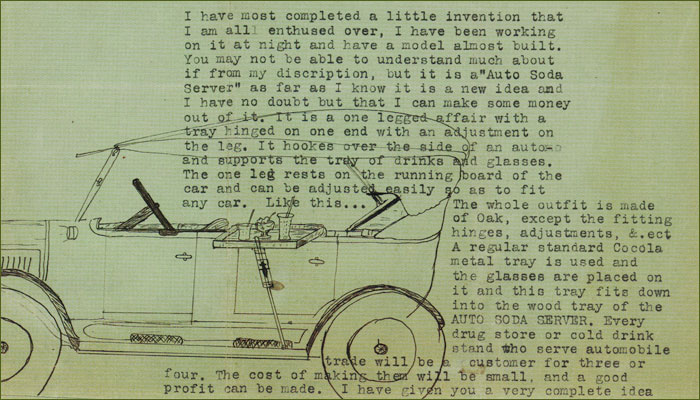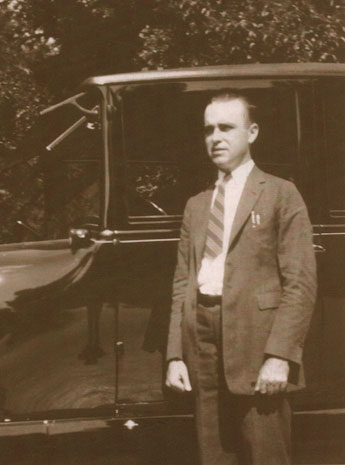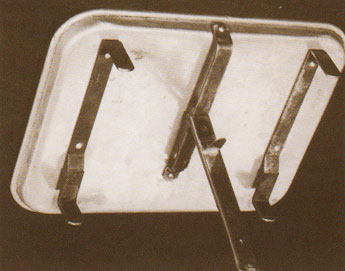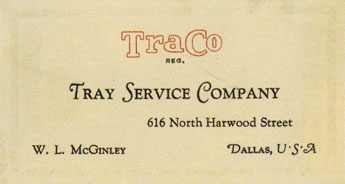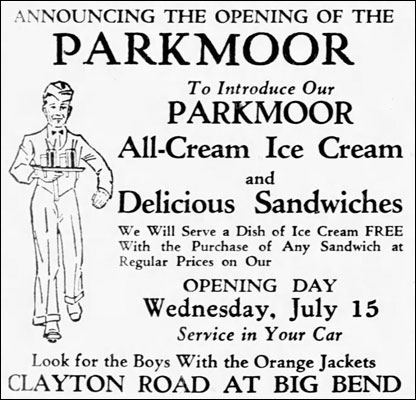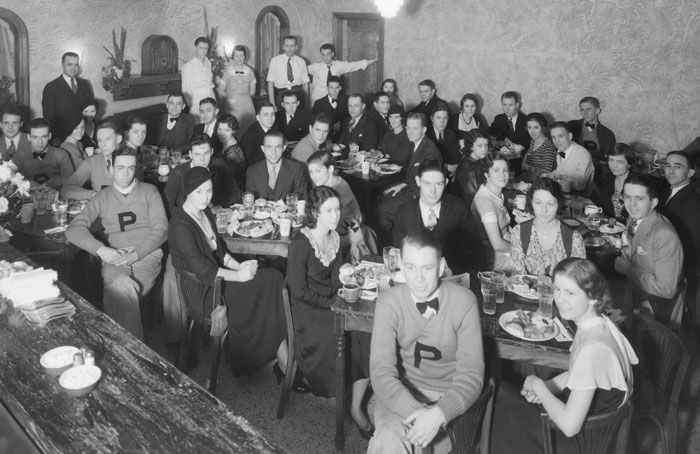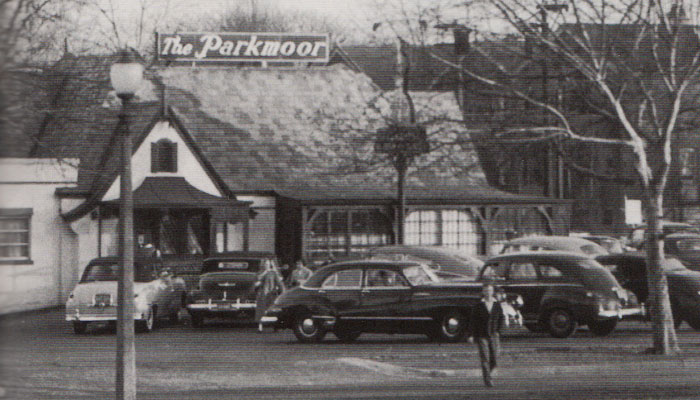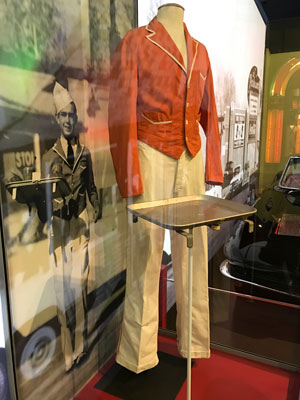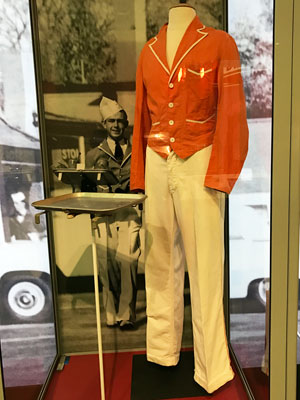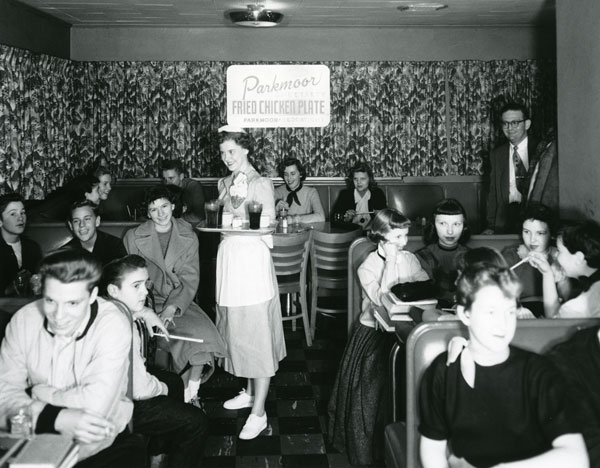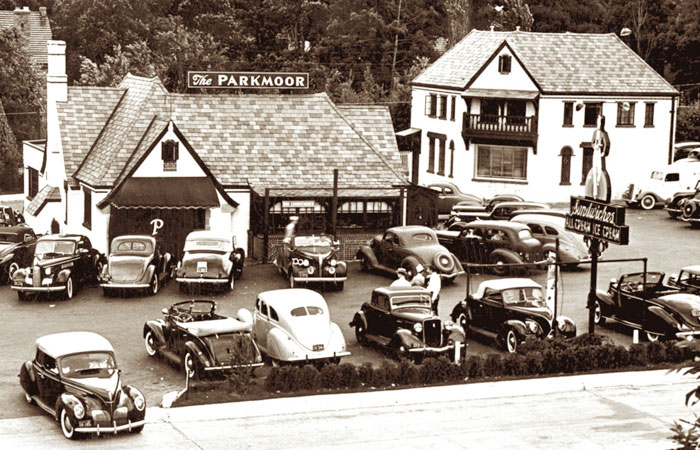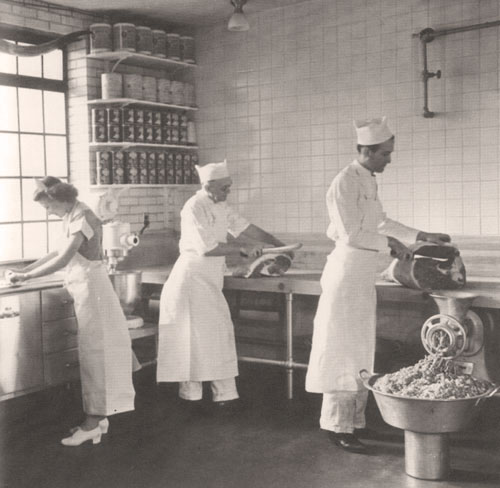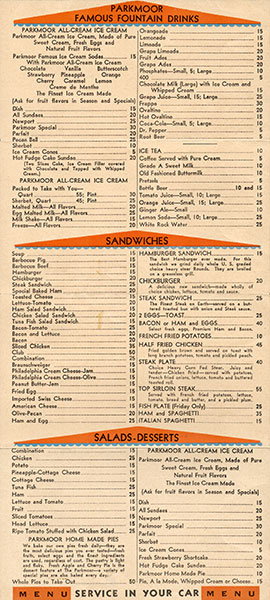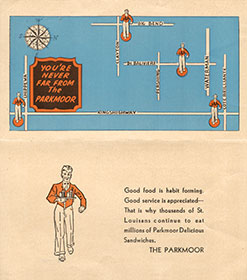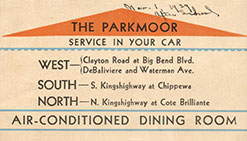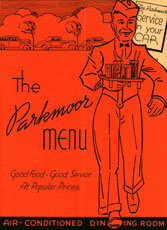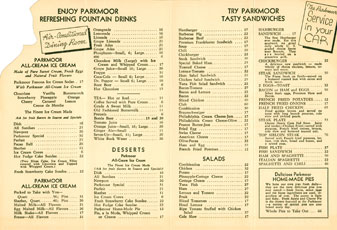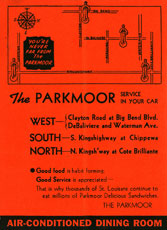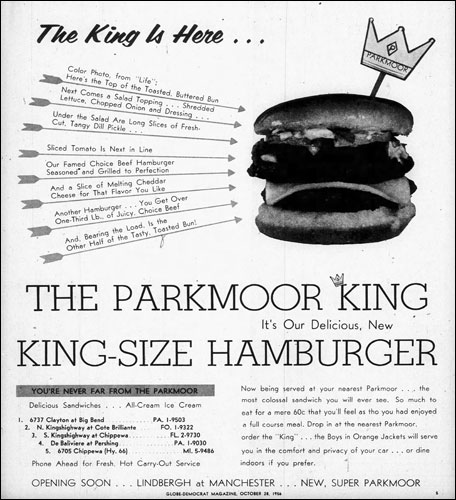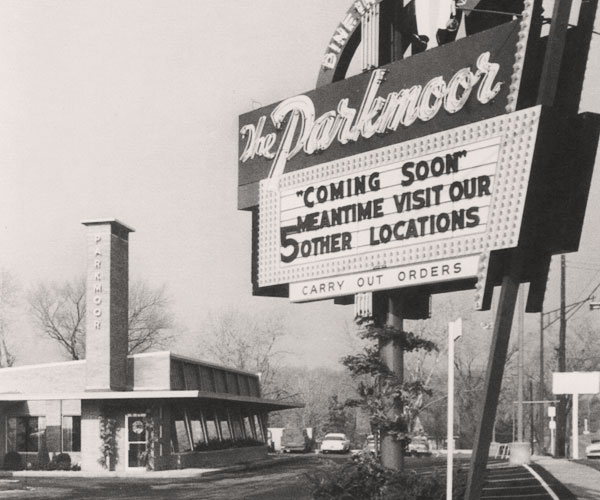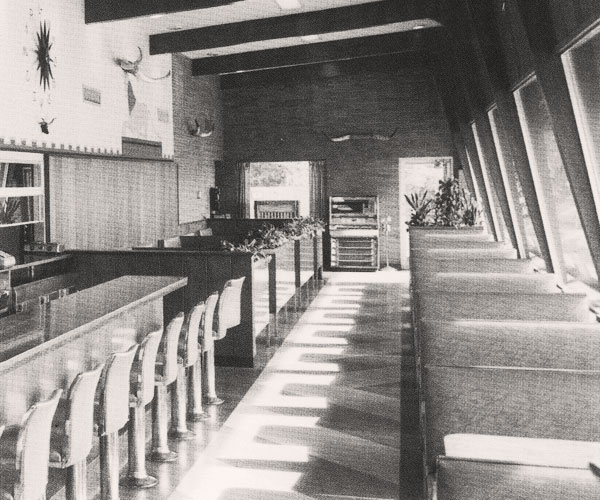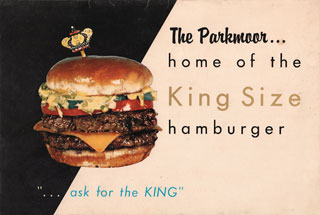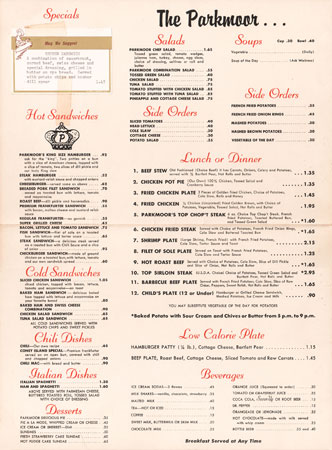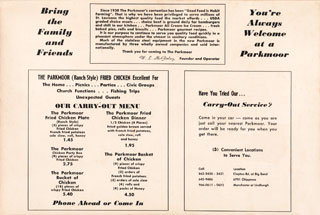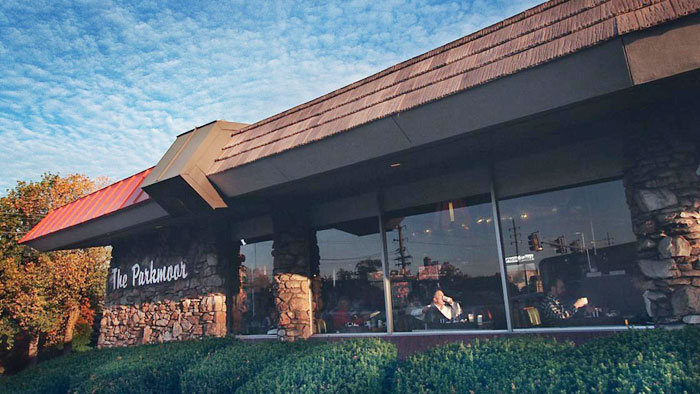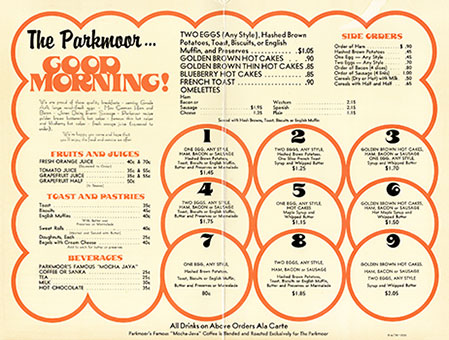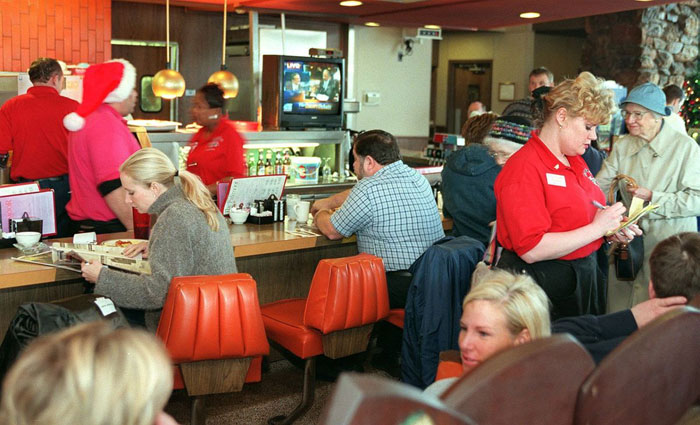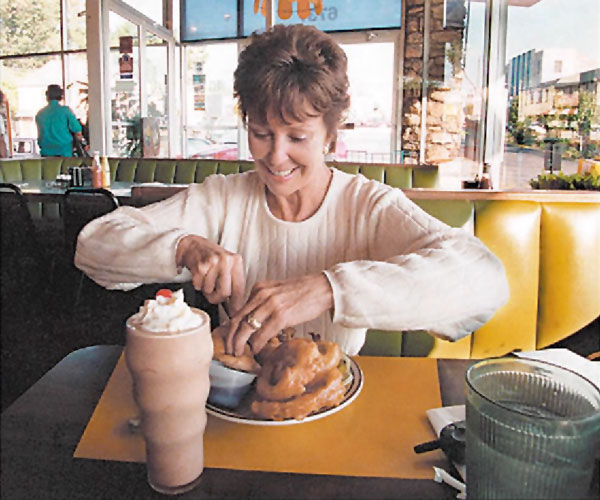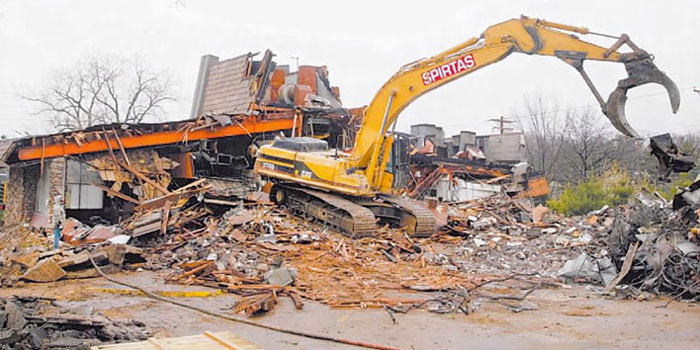|
The Parkmoor William Louis "Louie" McGinley was born on November 25, 1898 in Norman, Oklahoma. When he was six, his family moved to the resort town of Mineral Wells, Texas. Hotels became the family business, and young Louie quickly took to the world of hospitality. At the onset of World War I, McGinley moved with his family to Wichita Falls, Texas. Rather than finish high school, he studied typing, shorthand and bookkeeping at a commercial college in Tyler, Texas, where he met Ellen Adelle Robertson. The two were married a short time thereafter and moved to Ranger, Texas, where McGinley worked selling cars for Goad Motor Company.
McGinley had an older brother Mack, who was
creative and highly visual. After returning from military service in
World War I, Mack joined his brother selling cars at Goad.
While at Goad, Mack
came up with the idea of an "auto soda server" – a tray that could
attach to the side of an automobile to serve beverages. In a letter
to his parents, dated March 31, 1923, Mack described his invention,
complete with a sketch.
Together, the McGinley brothers built a
prototype of Mack's service tray, applied for a patent and began
manufacturing and delivering "TrayCo Service Trays" to drugstores,
confection shops and refreshment stands. Eventually, Mack would sell
his shares of the Tray Service Company to his brother, Louie.
The viability of TraCo trays was dependent on the viability of the fledgling curb-service business. So McGinley set out traveling the country in his Model T Ford, determined to sell the concept of drive-in restaurants. McGinley's cross-country trek led him to St. Louis, where drive-in restaurants and curb-service were not yet popular. He realized that St. Louis restaurants were resistant to curb-service because they didn't understand it. So to help them realize the boon it would be, he opened his own curb-service restaurant.
McGinley called his drive-in restaurant The
Parkmoor. It opened on Clayton Road at Big Bend on July 15, 1931,
and Clayton police had to be summoned to direct the carloads of
customers who turned out. Carhops in bright orange jackets and white
hats weaved in and out, serving 16-cent sandwiches and 5-cent Cokes
on McGinley's aluminum trays.
The Parkmoor's business took off. It attracted a wealthy clientele from Clayton and University City. The greatest portion of the business came from students at Washington University. Sit-down dining was offered in addition to curb-service.
On November 28,
1932, a banquet was given for Parkmoor employees in the restaurant's
main dining room. Several of the men wore orange sweaters with a
large Parkmoor "P" on the front.
A Parkmoor second location was opened on North Kingshighway at Cote Brilliante
in 1932, across the street from McBride High School. The parking ran
from Warwick to Cote Brilliante, and was the largest of the Parkmoor
lots — or any St. Louis drive-in.
A third Parkmoor opened in 1932 on South Kingshighway at Chippewa.
It drew a crowd from Southwest High School. This location was smaller than the other Parkmoors,
but proved more profitable, as larger amounts of food was served
with fewer employees.
Employees from the
first three Parkmoors gathered in 1934 for a group photo to
celebrate the company's third anniversary. Many Parkmoor employees were
from small towns in Missouri and Illinois. When they'd go home for
holiday visits, they often brought back friends and family to work
at The Parkmoor. This worked out well, with the restaurants seldom
needing to advertise for help.
In 1936 a Parkmoor was opened on DeBaliviere between Waterman and Pershing, in a space that had been the Car-Lane Sandwich Shop. There was a party room upstairs which could be rented for $10, if $10 in food was purchased. It was often populated by students from Soldan High School.
The DeBaliviere Parkmoor was close to Forest
Park. Many customers stopped in after playing golf or tennis, and
before or after going to the zoo or the Muny Opera. A box lunch was
created for parkgoers, including fried chicken, onion rings and a
pickled peach with its trademark clove.
As Parkmoors popped up around town, food
logistics became an issue. There was a need for quantity while still
maintaining quality. McGinley addressed this in 1938 with a
commissary — a two-story building adjacent to The Parkmoor in
Clayton, which prepared food for all of the restaurants from a central location.
The Parkmoor took pride in making delicious food with wholesome ingredients. The recipes were prepared from scratch, so fresh cream, eggs, meat and vegetables were mainstays in the commissary. For 70 years, The Parkmoor prepared fresh meat daily; there were no frozen patties. McGinley moved back to Dallas in 1945 to tend to his TraCo tray business, which was headquartered there. With strategic trips to St. Louis, McGinley successfully managed The Parkmoor from his Texas home.
Another Parkmoor opened
on Chippewa, near Watson, in 1950. It was a small restaurant which
offered several new concepts. Inside, there was counter seating
only; it was the only Parkmoor to serve breakfast; and a high-tech
first, curb-service customers could place their orders from speakers
located adjacent to drive-up menus.
On Sunday morning, October 28, 1956, a full-page ad appeared in the St. Louis Globe-Democrat with a new addition to the Parkmoor menu — the King burger. It offered two juicy patties crowned with a toasted golden bun, and adorned in ripe red tomatoes, crispy shredded lettuce, melted cheese and "Kingslaw." It even wore a little paper crown. The burger was so large and juicy, it required a special bag just to serve it.
By dinner that night, the restaurants were
under siege as customers tried to order "the hamburger in the ad."
There weren't enough to go around that day and Parkmoor spent the
next 43 years trying to satisfy their customer’s craving for the
burger.
The Parkmoor at Lindbergh and Manchester opened
in late 1956; it was the last Parkmoor location. It was large and very
busy, with 80 drive-in ordering speakers, an indoor
dining room for more than 100, and both counter and take-out service.
Customer at the counter enjoyed a taste of Texas, gazing at
longhorns and cow art, a tribute to McGinley’s Texas ranch.
Parkmoor menu favorites included the spicy barbecue Chickburger, crispy fried chicken, Louie's Chili, barbecue pig sandwiches and the Premium Frank, a hotdog on a toasted bun, topped with melted cheese, mustard, relish and bacon. French fries and golden onion rings were popular sides, and the Concrete All-Cream Ice Cream Shake and root beer float were favorite drinks. A favorite dessert was angel food cake topped with vanilla ice cream and mounds of J. Hungerford Smith hot fudge.
Terry Weir was a Parkmoor carhop with vivid memories.
By the late 1960s, the heyday of restaurant drive-in was over. The Parkmoor on South Kingshighway had closed in 1956. The North Kingshighway location closed in 1967, the DeBaliviere and Chippewa locations in 1969, and the Lindbergh and Manchester location in 1970. In 1969, curb service was eliminated altogether when the Tudor-style brick building at Clayton and Big Bend was razed to build a glass-and-stone Parkmoor that seated 165 people.
The new Parkmoor opened in the summer of 1969.
It was designed as a California style coffee shop, with the color
orange dominating the décor and a classic diner counter with swivel
stools the standout fixture. Other notable design touches included
Polynesian-style handles on the doors and yards of imitation
wood-grain tabletops.
In 1977, William McGinley suffered a crippling stroke. He died on January 30, 1980 at the age of 81 in a Dallas nursing home.
McGinley's daughter,
Lou Ellen, took over the business from her
ailing father in 1977. Juggling duties as a mother of two and wrangler of a
large cattle ranch, she traveled from Texas to St. Louis once a
month for 23 years to help operate The Parkmoor.
As time went on, The Parkmoor found it difficult to compete with the big chains. The restaurant continued to draw crowds, especially for breakfast on weekends, but only broke even. On Sunday, October 31, 1999 The Parkmoor closed its doors for the final time.
In 2004, the Parkmoor building was demolished
to make way for a new Walgreen's. Spirtas Wrecking Company began
tearing down the landmark restaurant at 8 am on March 31. By the next
afternoon, it was rubble.
Copyright © 2023
LostTables.com |
||||||||||||||||||||||||||||||||||||||||||||||||||||||

